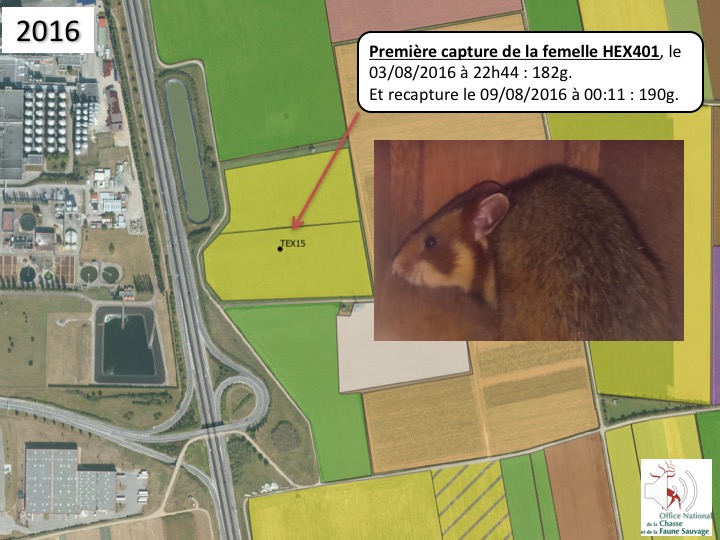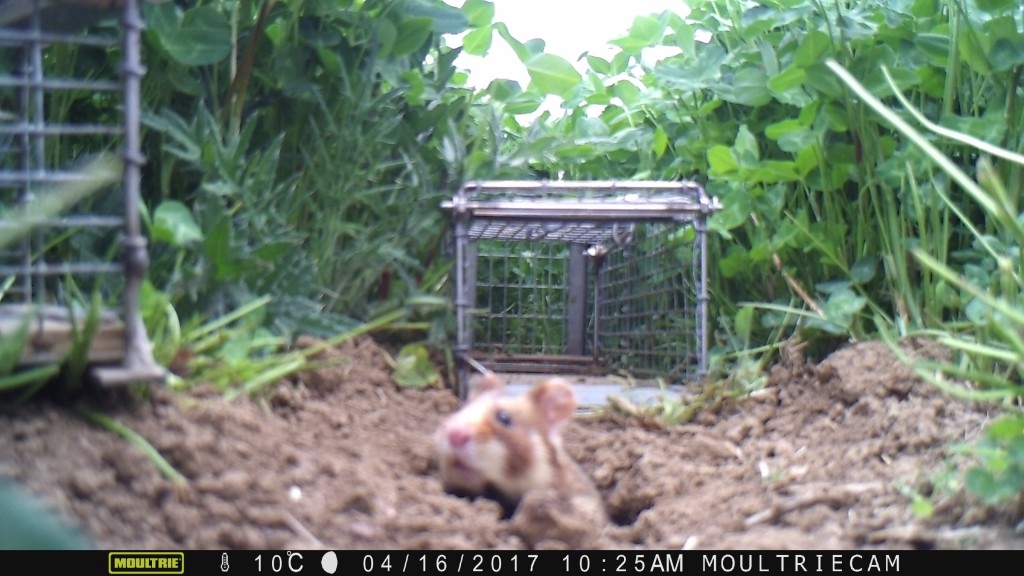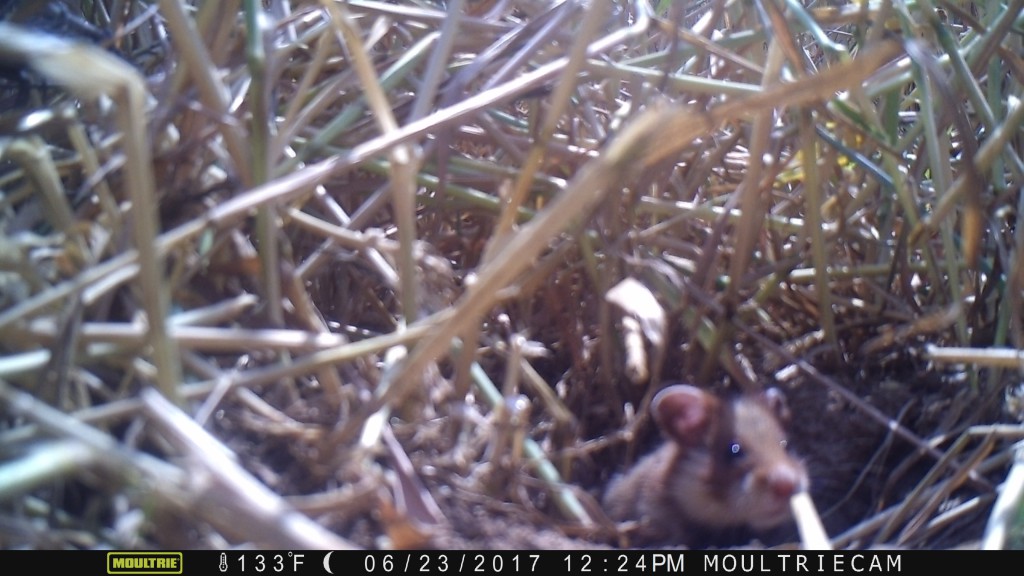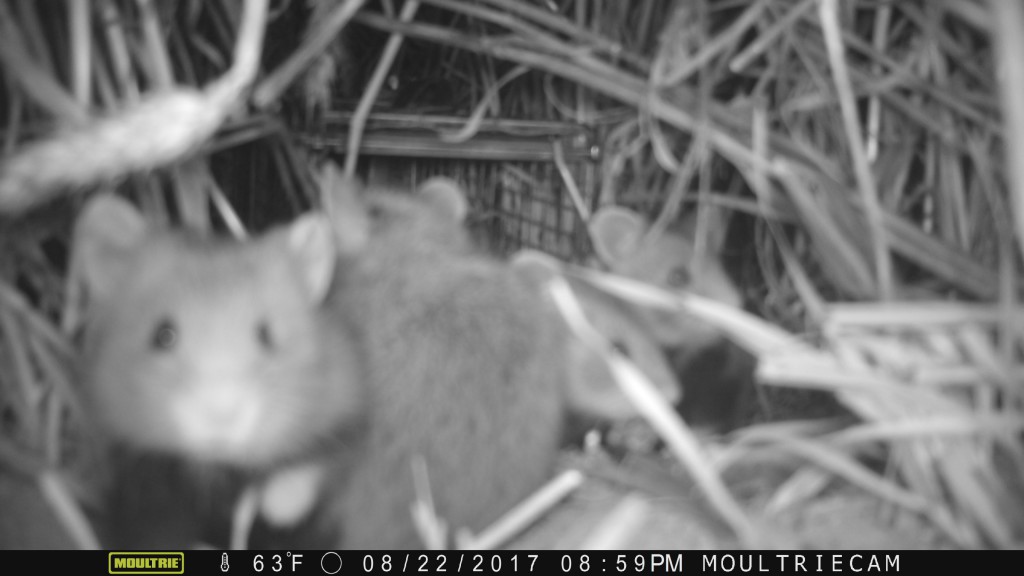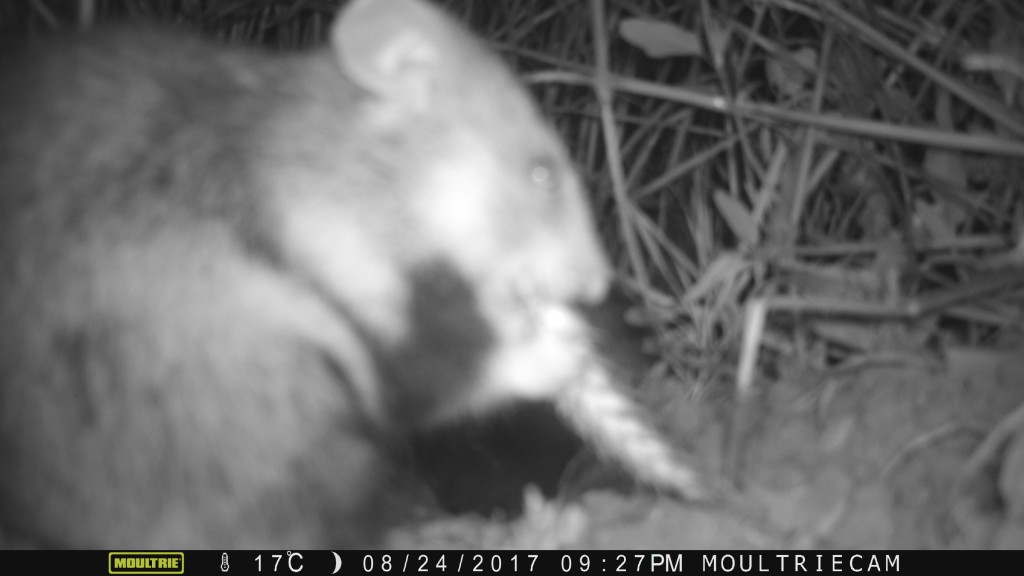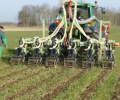The ONCFS monitors the female hamster HEX401
31 janvier 2018Within the scope of the LIFE Alister project, the ONCFS (French National Hunting and Wildlife Agency) is in charge of monitoring the European Hamster to assess the impact farming practices are having on the animals. The hamsters are caught, tagged and monitored from the start of spring. In this way, their movements, survival rate and breeding habits can be analysed.
Monitoring a female European Hamster is not an easy task
It all started on an experimental plot of land at Obernai agricultural college where she was captured for the first time in August 2016. She was equipped with a small microchip, similar to those that vets implant into pets; this meant she could be easily identified when captured again.
The female was still on the plot of land when she came out of hibernation in April 2017. She was captured a second time and equipped with a transmitter so the ONCFS could monitor her movements through telemetry. She was also watched with camera traps that were set off automatically by any kind of movement.
4 burrows in a single season
The clover was cut in May on the plot at Obernai agricultural college; this did not seem to please the female, who moved 278m to a plot of land planted with wheat to dig a new burrow. She was getting ready for the arrival of her first litter!
Her first litter was born around 26 May and left the burrow on 15 June.
Once the young were weaned, she went off to make another burrow 43m away, where she gave birth to a second litter that left the burrow on 15 July. Likewise, she then dug another burrow 42m further on for her third litter that left the burrow in August.
The third litter, with at least 4 young, left the burrow on 9 August.
After this breeding period, the female dug a new burrow 22m away, in order to hibernate. And she kept busily storing food there.
This female is lucky compared to her fellow hamsters. When the clover was cut in May, she was able to move and find suitable cover without being detected by a predator. She managed to give birth to three litters during the breeding season, which is fairly good for a female hamster in the wild today! Not all females change burrow systematically after their young are weaned; in other cases, the young hamsters are the ones to move on and the female gives birth to another litter in the same burrow. Sometimes, two females may use the same burrows for their litters.
The agricultural college enabled her to prepare for hibernation easily as it decided not to harvest part of its wheat crop. She found refuge and food there that could be stored in her burrow. The female HEX401 is still alive and we hope to see her again during the 2018 captures!

